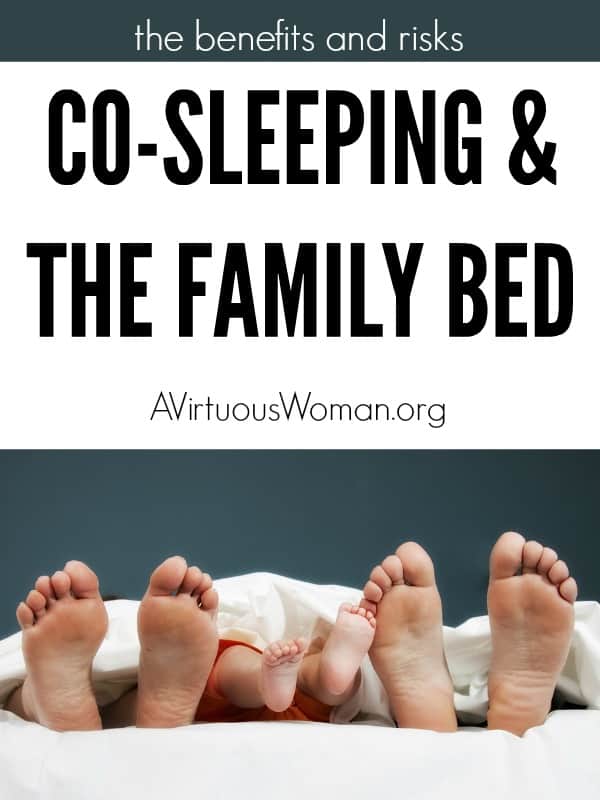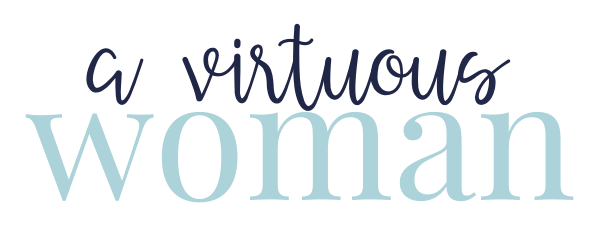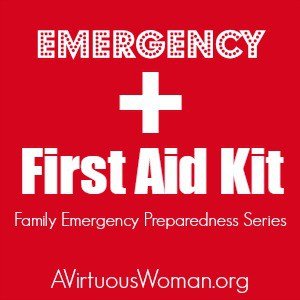Co-Sleeping & The Family Bed

From Chaos to Calm: Day 65
You can read the rest of the devotions in the From Chaos to Calm series here.
Perhaps this idea seems counter productive considering, yesterday we talked about how to keep the romance alive, but it needn’t be so. If you are creative, nothing will keep you and your husband from sharing special time together!
I have always been a supporter of co-sleeping with babies and children. Especially during the breastfeeding years. I slept with each of my children when they were infants because it made night time feedings so easy. More than that, I loved snuggling with them at nighttime.
Co-sleeping greatly benefits the breastfeeding relationship between mother and baby. By nature, breast milk is designed to be digested easily and quickly. Nursing babies flourish when fed on demand and frequently – sometimes every hour or more. Also the supply of breast milk increases when a baby is fed frequently and as often as the baby wants. This insures an adequate supply of milk. Ideas that a nursing baby should sleep through the night after a few months are unrealistic when one looks at the make up of breast milk. Infrequent nursing can be detrimental to the nursing relationship and milk supply. Babies who sleep with their mothers nurse more often although in research the mothers do not report awakening more often.
Many people are concerned that sleeping with their children will cause SIDS. (Sudden Infant Death Syndrome) Dr. William Sears, a leading pediatrician in the study of co-sleeping, says, “I believe that in most cases SIDS is a sleep disorder, primarily a disorder of arousal and breathing control during sleep. All the elements of natural mothering, especially breastfeeding and sharing sleep, benefit the infant’s breathing control and increase the mutual awareness between mother and infant so that their arousability is increased and the risk of SIDS decreased.”
Seven Benefits of Co-Sleeping:
1. Babies sleep better.
2. Mothers sleep better.
3. Breastfeeding is easier.
4. It is contemporary parenting.
5. Babies thrive better.
6. Parents and infants become more connected.
7. Reduces the risk of SIDS.
Source: Ask Dr. Sears
While co-sleeping with your child is almost always safe, there are facts to consider. I am a light sleeper, and can hold myself in one position the whole night to keep from rolling on my baby. I would wake up stiff and sore some mornings! It was worth it to me. There can be dangers to sleeping with children under the age of two. The Consumer Product Safety Commission reports that from 1990-1997 at least 515 children younger than the age of two died while sharing the bed with someone. Of those, 121 children suffocated because a parent or another adult rolled over them.
Most parents would not knowingly do something that would result in the harm of their child. No parent that sleeps with their baby believes he would roll over and smother their child. Those who are at high risk for overlaying a co-sleeping child are those who are large, restless or deep sleepers, those suffering from illness, or those who have consumed alcohol and/or drugs. Never sleep with your baby on a sofa where he or she can become crushed between you and the back of the sofa.
If you are worried that your baby will grow up to be a child who refuses to sleep alone, rest assured that your toddler can be weaned away from co-sleeping when you feel it is time. But if you are still worried … an alternative to co-sleeping is placing a crib or bassinet next to your bed where you can reach and touch your baby during the night. Having your baby next to you all night long is a special experience that will disappear before you know it. Mom and Dad and baby will be better off for it.
I’m sharing this post over at Good Tips Tuesday. Be sure to check it out for more great ideas!







One Comment